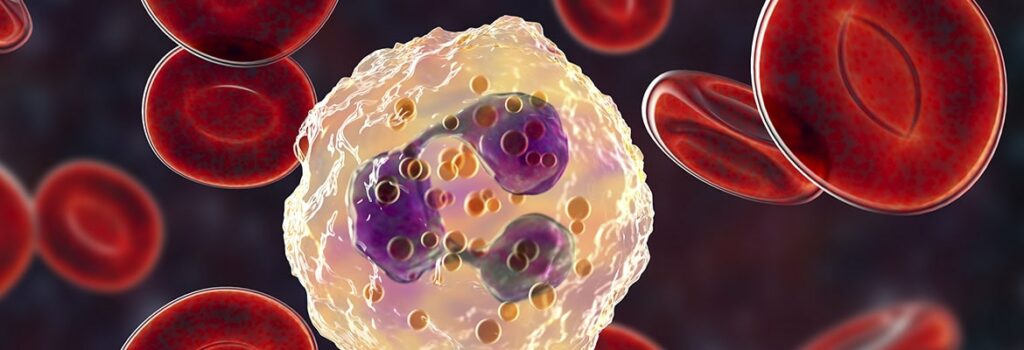Neutrophils may be a biomarker for SSc progression, mortality risk
By Claire Barnard, medwireNews Reporter
Study findings suggest that higher blood neutrophil counts and neutrophil-to-lymphocyte ratio (NLR) are associated with an increased risk for disease progression and mortality in patients with early systemic sclerosis (SSc).
When considered alongside “the recent discovery of a peripheral blood neutrophil gene expression signature”, these findings “support an important role for neutrophils in SSc, which merits further investigation”, write the researchers in Arthritis Care & Research.
Shervin Assassi (University of Texas Health Science Center, Houston, USA) and colleagues evaluated neutrophil and lymphocyte counts from 377 patients with early SSc (<5 years from the first non-Raynaud’s phenomenon symptom) who were included in the GENISOS cohort. Patients (17.8% men) were aged a mean of 48.4 years at baseline with a mean disease duration of 2.47 years; the average modified Rodnan Skin Score (mRSS) was 16.2 points and the average forced vital capacity (FVC) – a surrogate measure of SSc-associated interstitial lung disease (ILD) – was 82.5% predicted.
The team found that higher baseline neutrophil counts were significantly associated with more severe disease features at baseline, including diffuse cutaneous involvement, higher mRSS and lower FVC. NLR was similarly associated with diffuse cutaneous involvement and higher mRSS, but not with FVC.
Assassi et al then looked at disease progression over a median follow-up of 3 years, finding that higher baseline neutrophil count and NLR were significantly associated with higher mRSS and lower FVC measured serially over time. They note that both baseline and serially measured NLR values remained significantly associated with more severe skin and lung involvement after adjustment for race and baseline prednisone use.
In addition, multivariable analysis showed that higher baseline neutrophil count and NLR were significant predictors of mortality after adjustment for baseline and clinical factors, with adjusted hazard ratios (HRs) of 1.47 and 1.48, respectively.
The investigators confirmed their findings in a validation cohort of 134 patients with SSc-ILD from the SLS II trial. In this population, baseline neutrophil counts predicted mortality risk with a HR of 2.22, while NLR predicted mortality risk with a HR of 1.84 after adjustment for age and treatment arm.
“Cumulatively, these results provide direct clinical support for a pathological role of neutrophils both independently and possibly via interaction with lymphocytes in SSc pathogenesis”, say Assassi and colleagues.
They conclude: “Mechanistic studies further investigating the modulatory role of the neutrophils and its relationship to adaptive immunity can provide important insights into pathogenesis of SSc and its complications.”
News stories are provided by medwireNews, which is an independent medical news service provided by Springer Healthcare Ltd. © 2022 Springer Healthcare Ltd, part of the Springer Nature Group
Arthritis Care Res 2022; doi:10.1002/acr.24880

